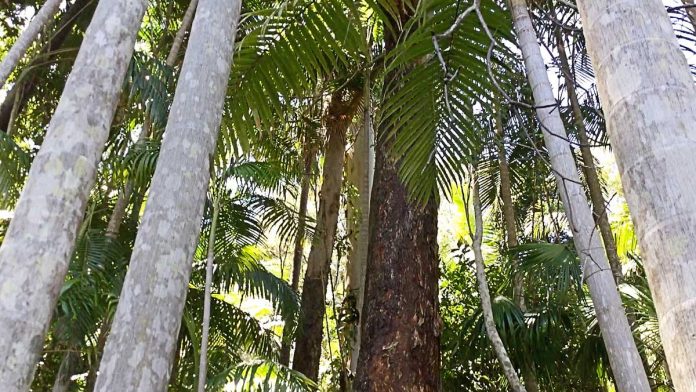The International Day for Biological Diversity, held on May 22, celebrates biological diversity, the variety of life forms that exist. At a time when the world faces an extinction crisis of massive proportions, it also highlights the critical importance of biodiversity for human flourishing, sustainability and the climate.
Forests are arks of biodiversity and are critical to maintaining the Earth’s life support systems. They regulate the climate, store carbon, produce oxygen, play a key role in supplying clean water, and lessen flooding, landslides and other natural disasters.
Australia is one of the ten most biodiverse countries in the world. The forests of the Mid North Coast of NSW are among the most diverse on the continent, consisting of several ecological “mixing zones” between warm temperate, temperate, and sub-tropical forests and rainforests. They are part of the ancient “Gondwana” forest legacy, when Australia was still connected to Antarctica and Latin America. One hundred million years ago the continent slowly began to drift north and dry out, resulting in the evolution of the Eucalypt (gum) species. Several rainforest tree species are unique only to a few valleys, such as the magnificent ringwood, or aniseed myrtle. Some of Australia’s largest eucalypts flourish, including Eucalyptus grandis (flooded gum) and the magnificent brushbox. It is this diversity that has allowed for such a range of native fauna, including the tiger quoll and the beloved koala, Australia’s national icon. The region is now perhaps the last and largest stronghold for the imperilled koala.
Yet, these forests are under threat from deforestation and climate change. The 2019/20 bushfires burnt 4.8 million hectares of land in NSW, including just over 64 per cent (approximately 0.7 million hectares) of the native state forest estate including a huge proportion on the Mid North Coast. More than 40 per cent of the Gondwana forests were severely impacted. Billions of creatures were killed.
For the last two years, under the cover of bushfire “salvage” logging and Covid-19 lockdowns, forestry operations have escalated in the region. The hardwood coastal blackbutt forests have become the desired timber for the construction industry up and down the eastern seaboard, due in part to taxpayer-funded stimulus packages and home renovations.
This is not only about the regions. It is an irony that koala habitat is being cut down in a regional biodiversity hotspot, only to build houses in and around Sydney’s urban fringe, on top of koala habitat at Mount Gilead.
Local communities are responding to the increased logging in various ways – through forming “friends” groups to protect the forests, and through proposing ecologically, socially and economically viable alternatives to native forest logging, including the Great Koala National Park, the Gumbaynggirr Good Koala Country plan, and a smaller, overlapping plan at the Kalang River Headwaters. The case for such plans is all the more compelling given that industrial native forest logging in NSW operates at a loss of millions of dollars a year.
Concerned citizens on the Mid North Coast and beyond are also using popular online mapping platforms and verifying activities on the ground to hold forestry companies, agencies and contractors to account. These “citizen scientists” are saving forests through their interventions by identifying illegal logging and preventing the clearing of remnant native vegetation. The technology is simple but powerful. Using satellite imagery, citizens overlay forestry logging plans and historical imagery and determine land use change over time, sometimes within days. Collaborating online and in the forest, city dwellers and local residents are coming together to stop the destruction. Anybody can help after a few brief lessons, wherever they live.
With the support of the Bob Brown Foundation, citizen science training will be offered in July to those wanting to help protect the forests of the Mid North Coast and beyond. To express your interest in participating, contact Dorothee Babeck at the Bob Brown Foundation on doro@bobbrown.org.au.
Concerned citizens also support campaigns to protect koalas and end industrial native forest logging across NSW through the NSW Nature Conservation Council.
_______________
This article is by Dr Miriam Pepper (Environment editor for the South Sydney Herald) & Dr Tim Cadman (an academic in climate change and environmental research).





